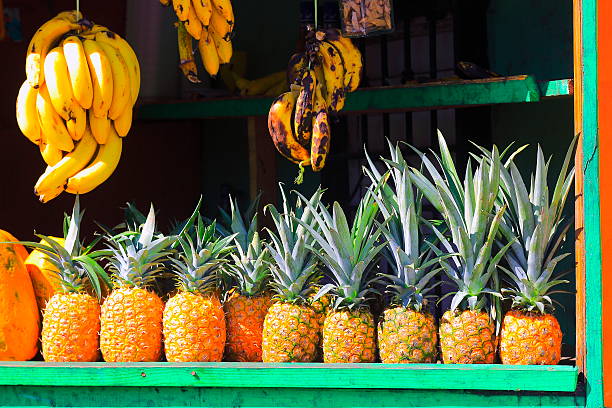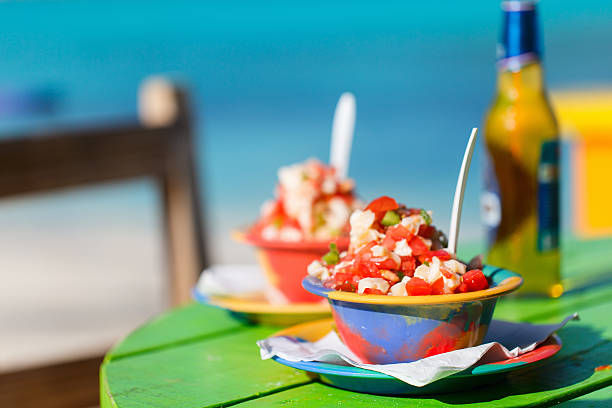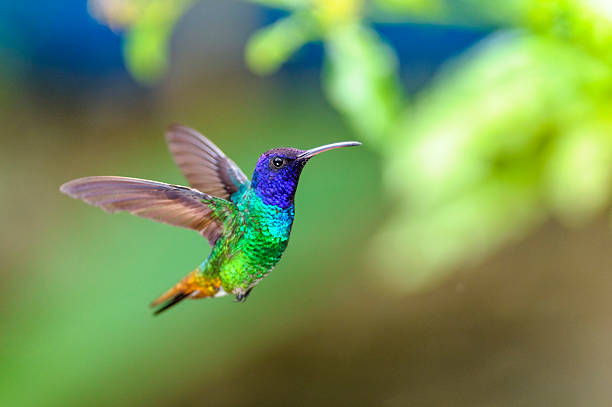Experiencing The Aromas of Caribbean Cuisine
Caribbean cuisine, an eclectic blend of flavors and cooking techniques, offers a culinary adventure for food enthusiasts worldwide. This article explores the rich diversity of this cuisine, the innovative spins on traditional dishes, and the emerging trends that are redefining Caribbean gastronomy.

A Cultural Melting Pot
The Caribbean cuisine is a unique blend of influences from Africa, Europe, East India, and China. Each island has its own distinct culinary tradition, yet the common thread is the use of tropical fruits, fresh seafood, and a plethora of spices. From the jerk chicken of Jamaica to the pelau of Trinindad and Tobago, each dish offers an explosion of flavors that embody the region’s vibrant culture and history.
Modern Interpretations of Traditional Dishes
Many Caribbean chefs are taking traditional dishes to new heights with creative twists. For instance, the classic Jamaican patties are now available in gourmet versions filled with lobster or shrimp. Similarly, the traditional bake and shark of Trinidad has evolved to include unique toppings like mango chutney and tamarind sauce. These reinterpretations showcase the versatility and adaptability of Caribbean cuisine.
Infusion of Health Conscious Trends
With the rise of health-conscious dining, Caribbean cuisine is also shifting towards healthier alternatives. Many restaurants are now offering vegan and gluten-free versions of popular dishes. Coconut milk is often used as a dairy substitute, and a variety of vegetables and legumes are incorporated into meals for added nutritional value.
The Rise of Caribbean Street Food
Street food is an integral part of Caribbean culture, offering an authentic taste of the islands’ gastronomy. Ackee and saltfish, doubles, and griot are some of the popular street foods that are gaining recognition worldwide. Food festivals and pop-up markets are also becoming popular platforms for showcasing this aspect of Caribbean cuisine.
The Influence of Caribbean Beverages
Caribbean beverages, both alcoholic and non-alcoholic, are an essential part of the culinary landscape. From the iconic rum punch to the refreshing coconut water, these drinks enhance the dining experience. There is also a growing trend of incorporating these beverages into dishes, creating unique flavor combinations.
- Caribbean cuisine is more than just food; it is a vibrant expression of the region’s history and diverse cultures.
- The cuisine is marked by the use of vibrant spices, fresh ingredients, and unique cooking techniques.
- Modern interpretations and health-conscious trends are shaping the future of Caribbean cuisine.
- Street food offers an authentic and accessible way to experience Caribbean flavors.
- Rum and other indigenous beverages play a crucial role in the culinary experience.
As we conclude this gastronomic journey, we appreciate Caribbean cuisine’s ability to adapt, innovate, and captivate taste buds worldwide. Its vibrant flavors, diverse influences, and creative reinterpretations make it a continually evolving culinary landscape that offers something for everyone. Whether you’re a food enthusiast or a casual diner, Caribbean cuisine invites you to embark on an unforgettable culinary adventure.





